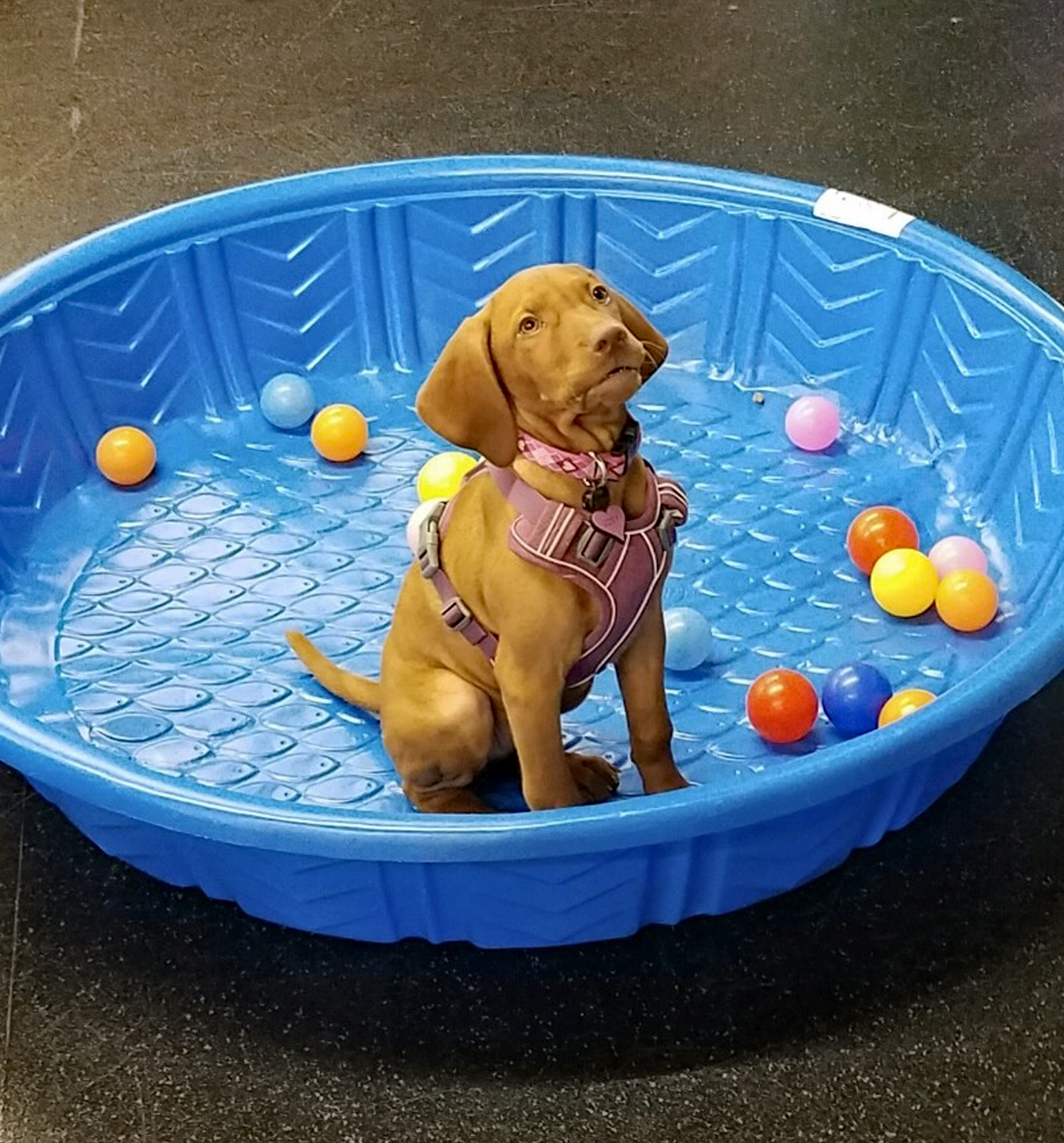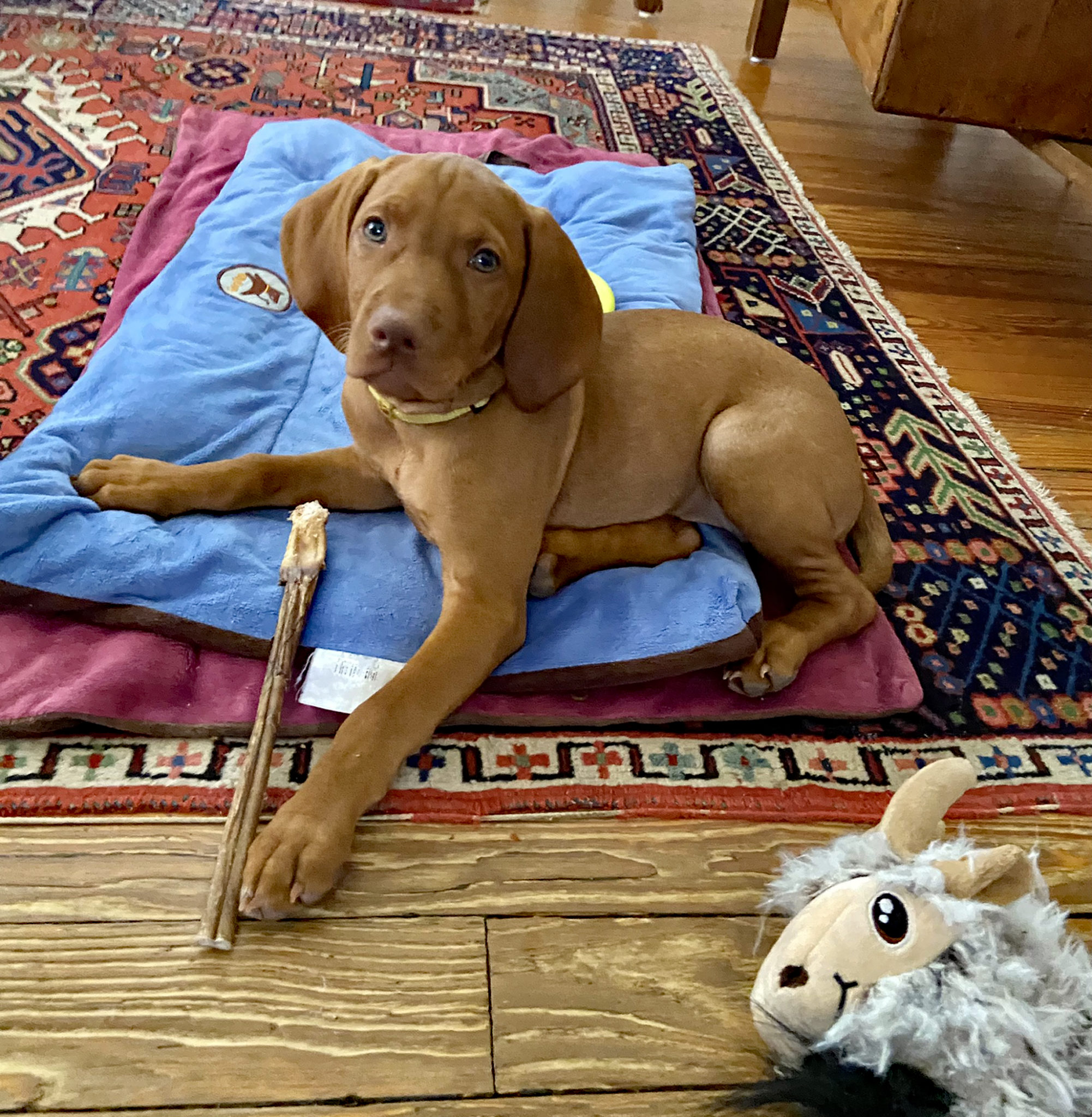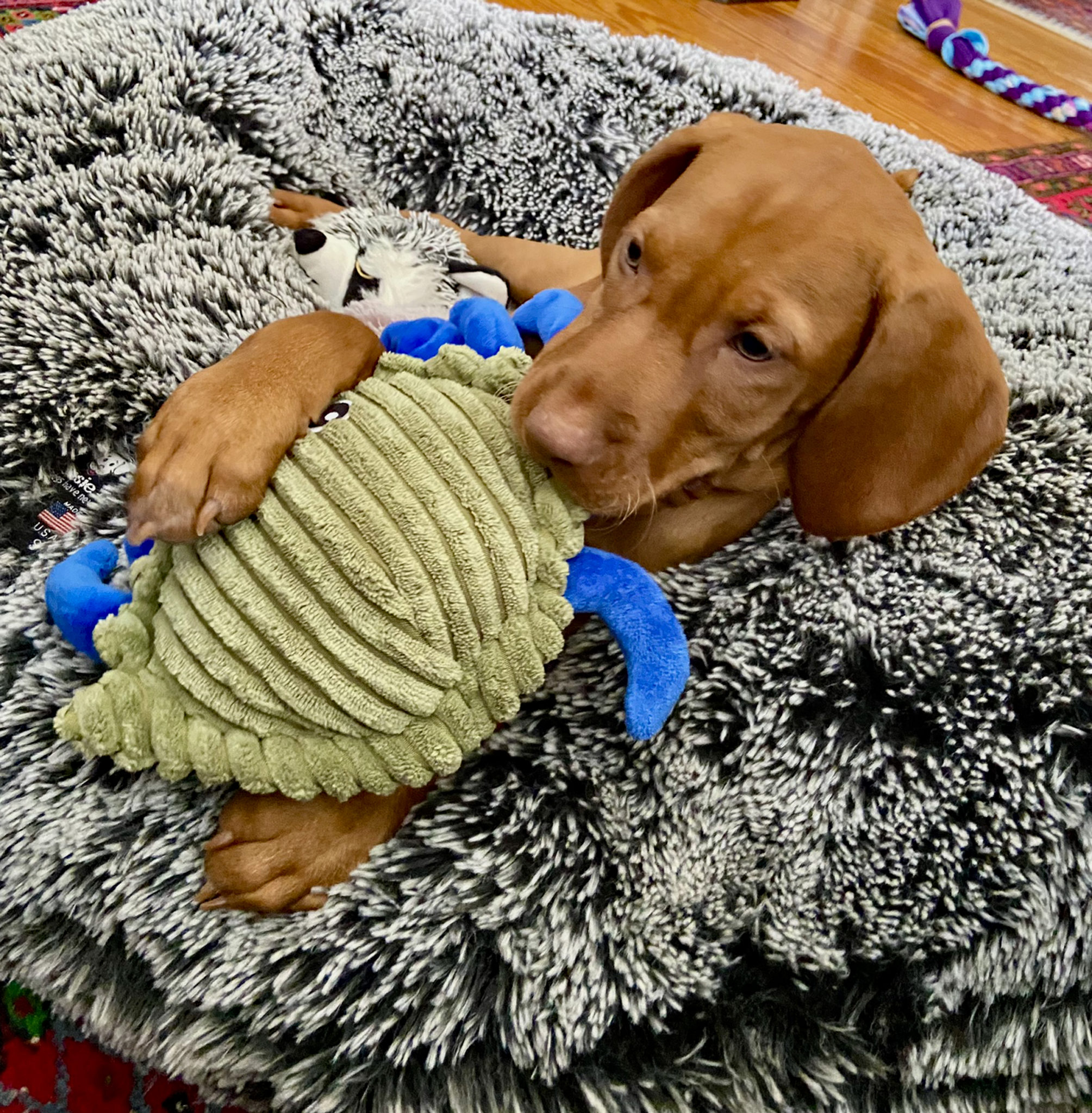Puppy Joy, Puppy Pandemonium

Alexandria, VA – I am a puppy expert. I’ve taught thousands of clients how to train their puppies, teach them the behaviors they want, and address the very normal but inappropriate behaviors they don’t want. I empathize with puppy clients with bites and bruises from their baby sharks.
Young children with scratches on their arms and legs and holes in their shirts are reluctant to play with their new puppy because the puppy wants to play littermate style. For the first 8-10 weeks of a puppy’s life, they eat, sleep, and play like ninja warriors with their brothers and sisters. Then we get them home and let the games begin!
A few months ago, we brought home our bundle of joy, Joey, a 9-week-old Vizsla. Dripping with cuteness, she followed me everywhere, came with just a kissy sound, cuddled up in my arms, and slept a lot. I tell my clients that puppies 8-12 weeks of age are more compliant than they will ever be until they are trained. That’s one reason training should begin the minute they step into your home.
Puppies learn from the day you bring them home. That’s why teaching the good behaviors that you want is so important. Puppies come with such “bad” but very normal puppy behaviors. We don’t want them confirming these behaviors. We want to set them up for success by teaching them what to do instead.
Joey is one of the most challenging puppies I have ever had. She’s a nipper, a biter, a digger, a jumper, and a puller. Not to mention the zoomies! Here are some behaviors I have had to work on proactively.
Puppy Nipping and Biting
I have never had such a bitey puppy. From the start, I surround myself with tugs, toys, bully sticks, Himalayan yaks, and other chews to redirect Joey onto what’s appropriate to bite. Being proactive, I can get Joey to bite on her toys and chews before she launches herself onto me. This is much better than yelling “ouch!” which can arouse a puppy more.
Dogs know we are not dogs, so mimicking their mother or siblings doesn’t solve behavior issues. For many years people were told to show the puppy who’s boss. Techniques such as scolding a puppy or holding their muzzle shut had no scientific basis. Such “correction” methods can hurt and create fearful puppies, increase anxiety and aggression, and make them afraid of you. If a trainer tells you that, run the other way.
So what’s the answer? Teach them what to do instead. Puppies need to chew. They have to learn not to chew on you.
Jumping Up
Puppy jumping is normal attention-seeking behavior. Joey is athletic and a great jumper. It’s hard not to pay attention to an adorable puppy who jumps up on you. But the more they jump, the more they’re going to jump. And they’re not going to be small forever. In only a few months, they will double and triple in size.
The good news is that puppies can learn to keep four feet on the floor by reinforcing that behavior. Your mantra should be, “only calm behavior gets rewarded.” Giving puppies behavior choices instead of insisting they sit all the time strengthens overall self-control. Joey’s learning default behaviors, e.g., sitting, lying down, or just standing quietly.
We can set puppies up for success by getting down at their level to give them the attention they want. Teaching a solid “place” cue provides a “chill” spot for your puppy to relax, which has worked well for Joey. She often goes to her mat on her own. It’s a great alternative to coming into the kitchen and jumping on counters.

Leash Walking
Walking nicely on leash is a learned behavior that doesn’t come naturally to puppies. They quickly discover that pulling gets them where they want to go if we let them. They are small and don’t pull that hard yet. But if it works for them, they’ll do it. Some puppies walk a short distance and then lie down. If you pull on the leash, they become dead weight or pull in the opposite direction. The opposition reflex is a dog’s natural resistance to physical pressure. I recommend taking the pressure off the neck with a body harness, which is healthier for them.
Joey never refuses to walk, but she doesn’t always want to go in the same direction as me. I have to make myself more exciting than the squirrel or the dog across the street. Taking high-value treats on the walks, reinforcing her when she’s giving me attention, and keeping the leash slack make our walks much more enjoyable.
Puppies do not need long walks initially. They don’t have the stamina or the bone structure for it. Short walks and letting them observe the environment will allow you to make positive associations with noises, other dogs and people, and novel objects, such as fire hydrants, garbage cans, and the inflatable Easter bunny on your neighbor’s lawn. This is puppy socialization. Does your puppy bite on the leash along the way? Bring a tug toy along for the walk and let them have fun biting it instead.

The good news is that Joey is a smart puppy. She enjoys learning and making the right behavior choices. She turned five months old today, and her baby teeth are falling out. Hallelujah! Join me next month to discuss the next challenging period, puppy adolescence. Remember, training is a lifelong journey with your dog.
Sandy Modell, CPDT-KA, is the Founder, Owner, and Head Trainer of Wholistic Hound Academy, Alexandria’s award-winning, premier canine training and learning center offering classes and private lessons in puppy training, adult dog manners, behavior modification, agility, dog sports, and canine fitness and conditioning, kids and dogs, pre-pet planning and pet selection. Classes starting soon! Visit www.wholistichound.com to enroll in our programs, like us on Facebook.com/wholistichound, and follow us on Instagram at Instagram.com/wholistichound.
ICYMI: Tips for a Dog Gone Good Holiday Season




